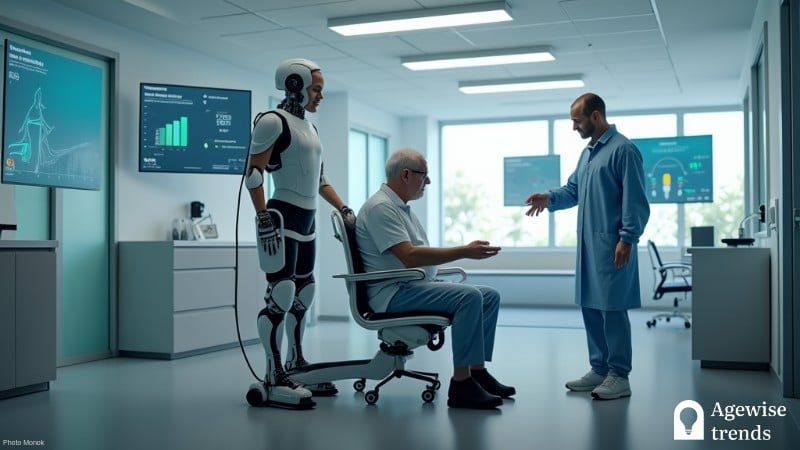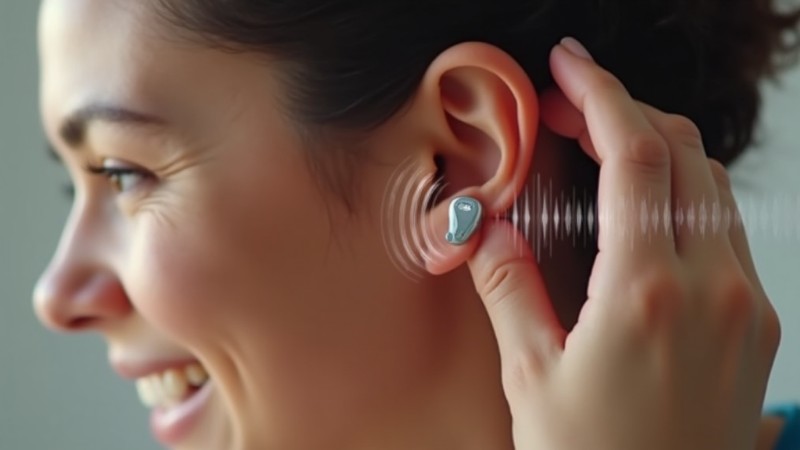The rehabilitation robots market is experiencing rapid growth, driven by advancements in robotic-assisted therapy, an aging global population, and increasing cases of disabilities and neurological disorders. These robots, designed to aid in motor function recovery, are revolutionizing physical therapy by providing precise, repetitive, and data-driven rehabilitation.
This year, the market is expected to be valued at approximately $495.53 million and is projected to reach $1,776.24 million by 2034. The expansion is fueled by technological innovation, increased healthcare spending, and the rising adoption of robotics in rehabilitation centers, home-based therapy, and Senior Care & Support – Technology for Seniors.
Key Takeaways
Rehabilitation robots are transforming therapy and senior care through AI-powered solutions, offering precise, repetitive rehabilitation that enhances patient outcomes.
- The global market for rehabilitation robots is expected to grow from $495.53 million in 2023 to $1,776.24 million by 2034 due to technological advancements and an aging population.
- Rehabilitation robots provide consistent movement training, real-time progress tracking, and adaptive feedback, making therapy more accessible and cost-effective.
- AI-driven robotic exoskeletons are enhancing rehabilitation for patients with spinal cord injuries and post-stroke mobility impairments by allowing them to control robotic limbs through neural signals.
The growing need for rehabilitation robotics
The demand for rehabilitation robots is closely linked to the rising prevalence of disabilities and neurodegenerative diseases. According to the World Health Organization (WHO), over 1 billion people globally live with some form of disability, and this number is expected to rise due to longer life expectancy and the increasing incidence of stroke, spinal cord injuries, and musculoskeletal disorders.
By 2050, the global population over 60 years old is projected to reach 2 billion, significantly increasing the need for advanced rehabilitation solutions. In the United States alone, 26% of adults experience a mental illness annually, highlighting the growing need for robotic assistance in both physical and cognitive rehabilitation.
Advantages over traditional therapy methods
Rehabilitation robots are changing the way therapy is conducted by overcoming the challenges of traditional physical rehabilitation. These advanced systems offer consistent and repetitive movement training, which is essential for effective motor recovery.
They also provide real-time progress tracking and adaptive feedback, allowing therapy to be tailored to each patient’s specific needs. Additionally, these robots help reduce dependency on human therapists, making treatment more accessible while also lowering costs. Another significant advantage is their home-based rehabilitation capabilities, enabling patients to continue therapy outside clinical settings, which improves convenience and long-term recovery outcomes.
The Inmotion ARM, for instance, enables stroke patients to regain arm function through robotic-assisted movements, reducing hospital visits and improving patient outcomes. These innovations are also crucial in assisting older adults by enhancing their mobility and supporting independent living.
Tech innovations fuel market growth
Advancements in robotics, AI, and machine learning are improving rehabilitation by enhancing precision and adaptability. Sensors, real-time monitoring, and cloud analytics help therapists track progress remotely.
AI and automation in rehabilitation
Artificial intelligence (AI) and automation are playing a crucial role in enhancing the effectiveness of rehabilitation robots. AI-powered robotic exoskeletons and therapy robots can adapt to patient needs by analyzing real-time biomechanical data, making rehabilitation more efficient and tailored.
Wearable robotic exoskeletons are particularly beneficial for patients with spinal cord injuries and post-stroke mobility impairments, as they assist with gait training and limb movements. Innovations such as brain-computer interface (BCI) exoskeletons allow patients to control robotic limbs through neural signals, significantly improving their rehabilitation experience.
These advancements also benefit older adults, as AI-driven robotic assistants assist with daily activities, provide mobility support, and aid in cognitive stimulation.
Expansion of telerehabilitation and remote monitoring
The integration of telerehabilitation is making rehabilitation robots more accessible. Patients can now undergo therapy at home while clinicians monitor their progress remotely. This approach is especially beneficial for rural and underserved populations, where access to physical therapists is limited.
For older adults, robot-assisted telerehabilitation provides a modern approach to addressing age-related mobility issues, enhancing accessibility and support in healthcare.
Regional market trends and key players
North America leading the market: North America leads the rehabilitation robots market due to a high disability rate, with the CDC stating one in four adults is affected. Rising demand has spurred government investments in AI-driven rehab robotics, boosting research and adoption.
Hospitals and rehab centers increasingly use robotic therapy for stroke and spinal injury recovery, strengthening the region’s market position.
Asia Pacific experiencing the fastest growth: Asia Pacific is the fastest-growing market for rehabilitation robots. The region’s aging population is a key driver, with 34.8% of Japan’s population expected to be over 65 by 2040. This rise increases the demand for robotic rehabilitation to support mobility and daily life.
Technological advancements in China and Japan are also fueling growth. Companies like SYREBO have launched hand and upper-limb rehabilitation robots, boosting adoption and accessibility.
Government support and healthcare expansion further strengthen the market. Increased funding for rehabilitation infrastructure and investments in assistive technology are driving wider adoption in healthcare facilities.
Investment trends and future outlook
The rehabilitation robots market is attracting major investments. In January this year, South Korea’s WIRobotics announced plans to launch a wearable gait support robot in the U.S. India’s Genrobotics introduced a pediatric robotic gait trainer for children with cerebral palsy, while IIT-K developed a BCI-based robotic hand exoskeleton for stroke recovery.
Earlier investments have also fueled innovation. In April 2024, the European Investment Bank (EIB) granted $27 million to Wandercraft for self-balancing exoskeletons. In March 2023, SiYi Intelligence raised $15 million to advance neurorehabilitation technology.
As AI, wearable robotics, and home-based rehabilitation solutions continue to evolve, the rehabilitation robots market is poised to reshape the future of physical therapy and assistive healthcare worldwide. The integration of advanced robotic solutions will further improve the quality of life, mobility, and independence of older adults.














